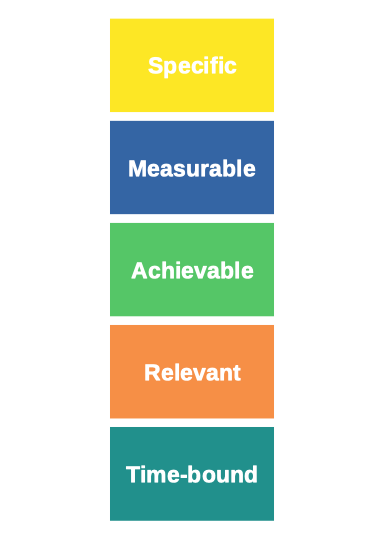Introduction to Python for Biologists.
- Why Python for Biology?
- Biological Data Types and Python
- Sequence Analysis - Part 1
- Sequence Analysis - Part 2
- Image Analysis - Part 1
- Image Analysis - Part 2
- Database Management and Python
- Statistical Analysis in Python
- Bioinformatics and Python
- Data Visualization in Python
- Machine Learning for Biology with Python
- Project Planning and Design
- Implementing a Biological Project with Python
Project Planning and Design
Design Your Project: A Comprehensive Guide

Mnemonic for a goal-setting criteria, which stands for: specific, measurable, achievable (or attainable), relevant, and time-bound.
In this unit, we will delve into the practical aspects of designing your own project. This process is crucial in transforming your ideas into a tangible, executable plan. Here, we will guide you through defining your project's scope, objectives, and methodology, identifying the Python tools and techniques to be used, preparing a project proposal, and refining your project design based on feedback.
Defining the Project's Scope and Objectives
The first step in designing your project is to clearly define its scope and objectives. The scope outlines the boundaries of your project - what it will and will not cover. It's important to be realistic about what can be achieved within the time and resources available to you.
The objectives of your project should be specific, measurable, achievable, relevant, and time-bound (SMART). They provide a clear direction and help you stay focused on what you aim to achieve.
Identifying Python Tools and Techniques
Once you have a clear understanding of your project's scope and objectives, the next step is to identify the Python tools and techniques that will be most useful for your project. This could include data analysis libraries like Pandas and NumPy, machine learning libraries like scikit-learn, or bioinformatics libraries like Biopython.
Consider the nature of your data and the type of analysis you need to perform. For instance, if your project involves image analysis, you might need to use libraries like OpenCV or scikit-image.
Preparing a Project Proposal
A project proposal is a document that outlines your project's objectives, methodology, and timeline. It serves as a roadmap for your project and can be used to communicate your plan to others.
Your proposal should include:
- An introduction that provides background information and states the problem your project aims to address.
- A clear statement of your project's objectives.
- A detailed description of your methodology, including the Python tools and techniques you plan to use.
- A timeline that outlines when each part of your project will be completed.
Refining Your Project Design
Once your project proposal is complete, it's important to seek feedback. This could be from your peers, mentors, or other experts in your field. They can provide valuable insights and help you identify any potential issues in your plan.
Take the time to carefully consider this feedback and make any necessary adjustments to your project design. This iterative process of feedback and refinement will help ensure that your project is well-planned and achievable.
In conclusion, designing your project is a critical step in the research process. It requires careful thought and planning, but with a clear understanding of your project's scope and objectives, the right Python tools and techniques, a detailed project proposal, and an openness to feedback, you'll be well on your way to executing a successful project.